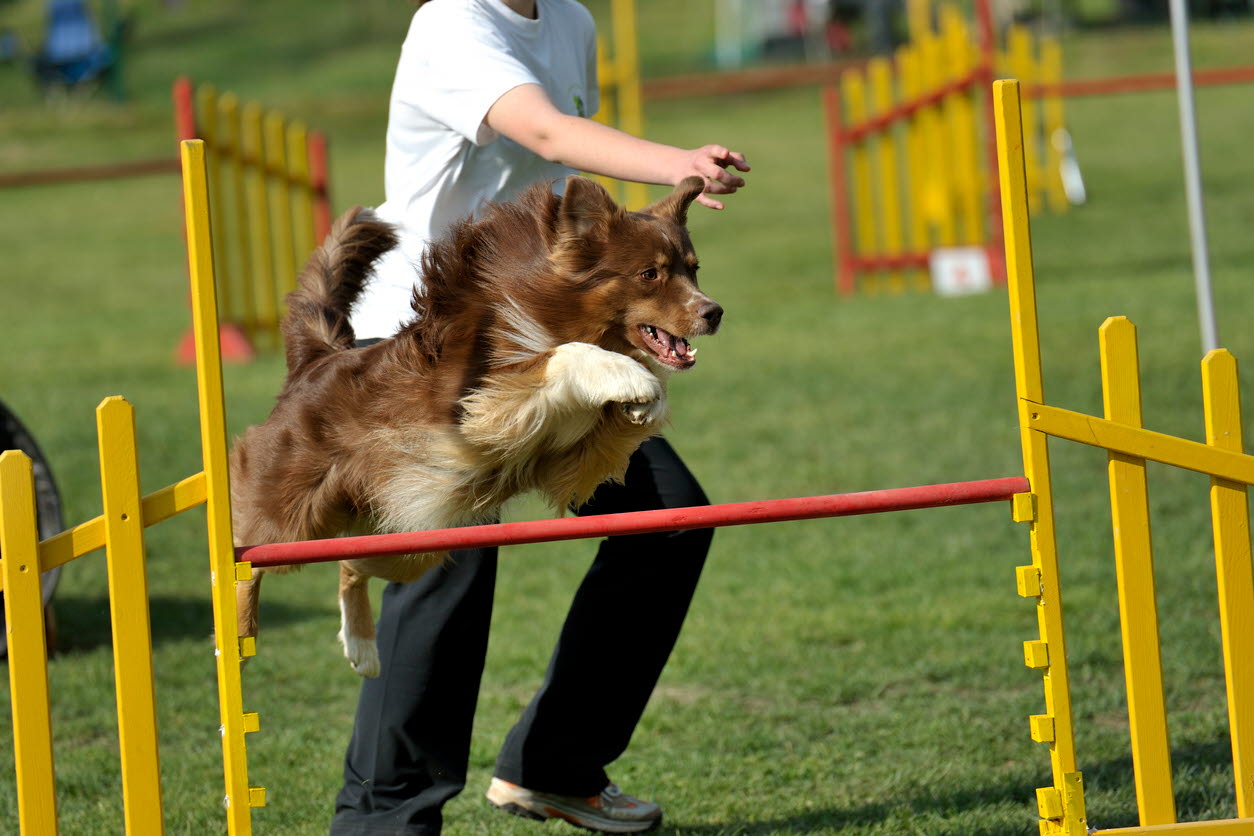
Whether you have read about it, or seen online videos of dogs running through tunnels, speeding up and down ramps or weaving through poles, there is little doubt that the sport of canine agility is gaining popularity. Canine agility has enormous benefits in providing physical and mental stimulation for dogs.
Canine agility exercises involve the navigation of dog-specific obstacle courses. Dogs are guided through a series of obstacles by their handler and are judged on their ability to complete the course within a set time. They can also be rewarded or penalised on how accurately an obstacle is completed. Dogs cannot be touched during their run or lured on with treats or toys, so success is down to verbal and visual commands between the dog and handler.
Some of the typical obstacles in an agility course include (but are not limited to) jumps, weave poles, tunnels, seesaws and ramps.
The benefits for dogs
- Mental stimulation: One of the most significant benefits of agility is the challenge it presents for a dog’s mind. Active dogs often have active minds, especially working dog breeds such as Australian Kelpies and Border Collies. The training and problem-solving involved in learning new obstacles and completing courses can provide the mental stimulation they require. Not only does this increase their general wellbeing, but keeping their minds positively occupied can reduce the likelihood of dogs developing destructive or obsessive behaviours and anxieties.
- Physical fitness: Developing the level of fitness required to complete an obstacle course is a great way to build your dog’s muscular and cardiovascular fitness. It can also help prevent obesity and the subsequent joint issues that obesity can cause. Although dogs can compete in agility at all ages, you should check with your veterinarian to ensure the level of physical activity is appropriate for your dog.
- Socialisation with other dogs: Attending competitions or training sessions can be a good platform for your dog to appropriately socialise with other dogs. It is essential to ensure that your dog has the basic training required to make this a positive experience for all animals involved. It is also important to ensure that their vaccinations and parasite prevention such as flea and worm control, are up to date prior to socialising with other dogs.
- Building a deeper connection between dog and owner: Canine agility is an entertaining but intense sport that requires a high level of training and understanding between dog and handler. Learning obstacles with your dog is not only a great way to build obedience but can also bring confidence and fun to your relationship.
Overall, canine agility is a great sport for building the physical fitness of dogs, whilst also providing them with an excellent source of mental stimulation. The training and time required can also serve to strengthen the bond between owners and their dogs. If you are interested in canine agility, you can discuss this with your local veterinarian to ensure your dog’s vaccination status and health is suitable. You can then contact your local canine agility club. to get started!
